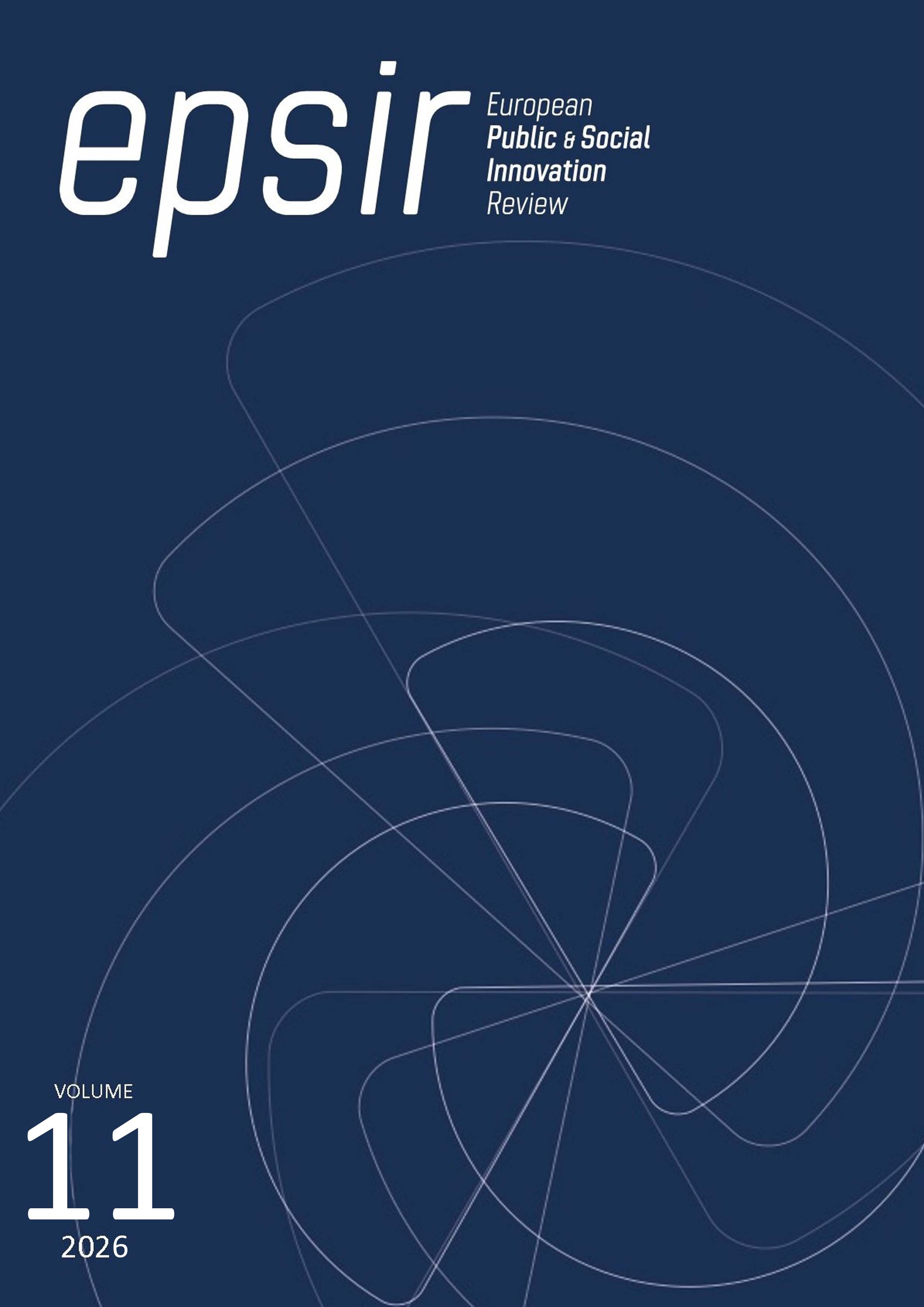Les NEET en Italie : s'attaquer aux obstacles à la formation et à l'emploi dans une société dynamique et incertaine
DOI :
https://doi.org/10.31637/epsir-2026-2115Mots-clés :
NEET, éducation, emploi, famille, enquêtes, orientation professionelle, transition professionelle, ItalieRésumé
Introduction : Le scénario socio-économique mondial actuel a créé un sentiment d'insécurité chez les nouvelles générations, les obligeant à faire des choix qui sont souvent en contradiction avec leurs aspirations légitimes en termes d'études, de travail et de réalisation de leurs objectifs. Méthodologie : une approche de recherche quantitative a été utilisée sur la base de 1 152 entretiens avec des jeunes Italiens âgés de 15 à 34 ans provenant de trois régions socio-économiquement différenciées présentant des taux élevés du phénomène à l'étude. Résultats : les résultats montrent que le phénomène NEET n'est pas imputable à la passivité ou au manque de volonté, mais à la rareté des opportunités, à la précarité économique et à la déconnexion entre l'éducation et le monde du travail. Discussion : Dans cette dynamique complexe, l'attention portée à ce phénomène revêt une importance toute particulière, car la situation d'incertitude économique, sociale et géopolitique que traverse l'Europe a augmenté le pourcentage de « limbes » existentiels, d'asymétrie générationnelle, et risque de paralyser les processus de développement culturel, politique et économique. Conclusions : Il est clairement nécessaire d'apporter une réponse politique cohérente, intégrée et structurelle, en encourageant les investissements économiques visant à améliorer la formation spécialisée et professionnelle, à soutenir l'esprit d'entreprise chez les jeunes, ainsi que les systèmes d'orientation et de tutorat.
Téléchargements
Références
Agenzia Nazionale Politiche Attive del Lavoro (ANPAL). (2022). Rapporto annuale ANPAL 2022: Politiche attive e occupazione giovanile in Italia. https://www.anpal.gov.it/documents
Ballarino, G., Barone, C. y Panichella, N. (2016). Origini social e occupazione in Italia. Rassegna Italiana di Sociologia, 1, 103-134. https://doi.org/10.1423/82904
Bandura, A. (1997). Self-efficacy: The exercise of control. W.H. Freeman.
Bonoli, G. (2009). Varieties of social investment policies in Europe. En N. Morel, B. Palier y J. Palme (Eds.), What future for social investment? (pp. 89-114). Institute for Futures Studies.
Bourdieu, P. y Passeron, J. C. (1970). La reproduction: Éléments pour une théorie du système d’enseignement. Éditions de Minuit.
Ellena, A., Marzana, D., Marta, E., Rosina, A., Simoes, F. y Pozzi, M. (2023). NEETs, one social gropus, many profiles: a proposed descriptive profiling of psychosocial dimensions. Rivista Internazionale di Scienze Sociali, 3, 353-384. https://doi.org/10.26350/000518_000121
EUROFOUND (2021). Exploring the diversity of NEETs: Country profiles and policy responses in the EU. Publications Office of the European Union. https://www.eurofound.europa.eu/publications
Gaspani, F. (2018). Giovani Neet e mondo del lavoro: una transizione complessa. Polis, 3, 289-314. https://doi.org/10.1424/91422
Goffman, E. (1963). Stigma: Notes on the management of spoiled identity. Englewood Cliffs, NJ, Prentice-Hall.
ISTAT (2021). BES 2021: equitable and sustainable well-being in Italy. Istituto nazionale di statistica. Rome.
https://www.istat.it/wp-content/uploads/2023/03/BES-2021-Report.pdf
ISTAT (2023). BES 2023: equitable and sustainable well-being in Italy. Istituto nazionale di statistica. Rome.
https://www.istat.it/wp-content/uploads/2024/10/BES-2023-Report.pdf
Montalbetti, K., Lisimberti, C. (2015). Ricerca e professionalizzazione educativa. Risorse e strumenti. Lecce, Pensa Multimedia.
Odoardi, C. (2020). Rapporto annuale sul sistema educativo italiano. ISTAT, Roma.
OCDE (2013). Skills Outlook 2013: First results from the Survey of Adult Skills (PIAAC). OECD Publishing. https://doi.org/10.1787/9789264204256-en DOI: https://doi.org/10.1787/9789264204256-en
Padova, P. y Ballati, E. (2018). Stratificazione sociale, riproduzione delle disuguaglianze e condizione NEET in Italia. Politiche Scoiali, 2, 245-274. https://doi.org/10.7389/90597
PIAAC (2024). Programme for the International Assessment of Adult Competencies. https://www.oecd.org/en.html
Quarta, S. (2015). Los NEET en Italia. Un estudio de género y una propuesta de investigación cualitativa. RESED, Revista de Estudios Socioeducativos, 1(3), 137-165. https://revistas.uca.es/index.php/ReSed/article/view/7959 DOI: https://doi.org/10.25267/Rev_estud_socioeducativos.2015.i3.08
Rosina, A. (2013). L’Italia che non cresce: Gli alibi di un paese immobile. Editorial Laterza.
Rosina, A. (2015). NEET. Giovani che non studiano e non laborano. Vita e pensiero, Publicazioni dell’Università Cattolica.
Schizzerotto, A. (2002). Vite ineguali: Disuguaglianze e corsi di vita nell'Italia contemporanea. Il Mulino.
Tilly, C. (1998). Durable Inequality. University of California Press. DOI: https://doi.org/10.1525/9780520924222
Tosi, F. (2018). Caratteristiche e determinanti della condizione Neet in Italia. Polis, 3, 387-400. https://doi.org/10.1424/91426
Trinchero, R. (2002). Manuale di ricerca educativa. Franco Angeli.
Vázquez-Rodríguez, A., García-Álvarez, J. y Lorenzo Moledo, M. (2023). ¿Qué hacer ante el riesgo de una generación perdida? Juventud y empleo en una era de incertidumbre. Estudios sobre Educación, 44, 81-107. https://doi.org/10.15581/004.44.004 DOI: https://doi.org/10.15581/004.44.004
Téléchargements
Publiée
Comment citer
Numéro
Rubrique
Licence
© Alessandra Giannola, Maria de los Angeles Olivares-García, Sonia García Segura 2025

Ce travail est disponible sous licence Creative Commons Attribution - Pas d'Utilisation Commerciale - Pas de Modification 4.0 International.
Authors who publish with this journal agree to the following terms:- Authors retain copyright and grant the journal right of first publication with the work simultaneously licensed under Creative Commons Non Commercial, No Derivatives Attribution 4.0. International (CC BY-NC-ND 4.0.), that allows others to share the work with an acknowledgement of the work's authorship and initial publication in this journal.
- Authors are able to enter into separate, additional contractual arrangements for the non-exclusive distribution of the journal's published version of the work (e.g., post it to an institutional repository or publish it in a book), with an acknowledgement of its initial publication in this journal.
- Authors are permitted and encouraged to post their work online (e.g., in institutional repositories or on their website) prior to and during the submission process, as it can lead to productive exchanges, as well as earlier and greater citation of published work (See The Effect of Open Access).



